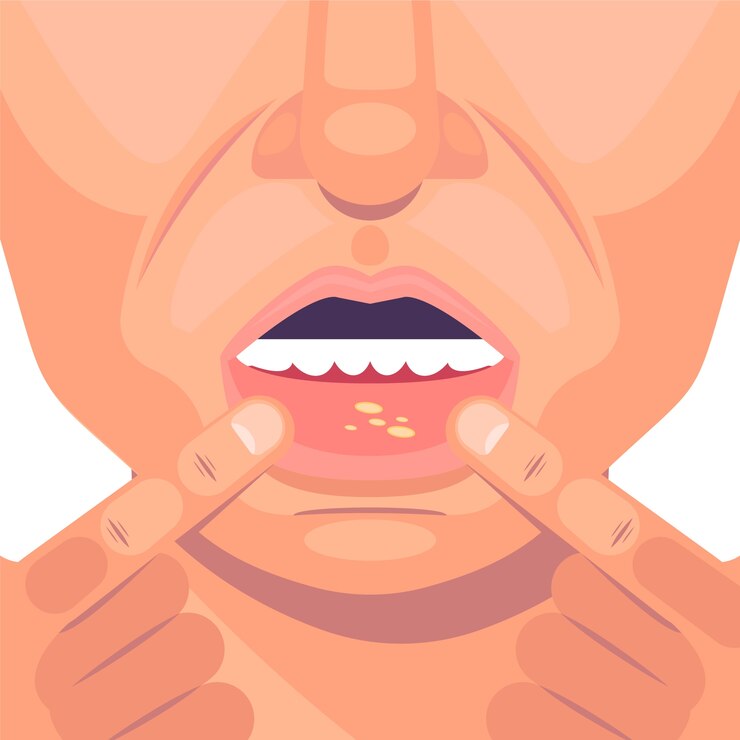
Understanding Cleft Mouth Ulcers: Causes, Symptoms, and Triggers
If you’ve ever had a sore in your mouth, you know just how uncomfortable they can be. But for individuals with a cleft palate or cleft lip, mouth ulcers can pose additional challenges. Let’s dive into what cleft mouth ulcers are, what causes them, and how to manage them effectively.
What are Cleft Mouth Ulcers?
First things first, let’s understand what a cleft palate or cleft lip is. A cleft is a gap or split in the upper lip, the roof of the mouth (palate), or both. It occurs when certain facial structures don’t fuse together during fetal development. Now, imagine dealing with mouth ulcers on top of that!
Cleft mouth ulcers are simply ulcers or sores that develop in the mouth of individuals with a cleft palate or cleft lip. These ulcers can form on the lips, gums, tongue, or inside the cheeks, making eating, talking, and even smiling painful.
Causes of Cleft Mouth Ulcers
Several factors contribute to the formation of mouth ulcers in individuals with a cleft. Here are some common causes:
- Poor Oral Hygiene: Neglecting oral hygiene can lead to bacterial buildup, which can irritate the sensitive tissues in the mouth, triggering ulcers.
- Friction from Dental Appliances: Many individuals with a cleft wear dental appliances, such as braces or retainers, to correct dental issues. These appliances can rub against the mouth tissues, causing irritation and ulcers.
- Cleft Surgery: Surgeries to repair a cleft palate or lip can sometimes result in scar tissue, which may make the affected area more prone to developing ulcers.
- Nutritional Deficiencies: Poor nutrition can weaken the immune system, making it harder for the body to fight off infections and heal wounds, including mouth ulcers.
Symptoms of Cleft Mouth Ulcers
Recognizing the symptoms of cleft mouth ulcers early can help in managing them effectively. Here are some common signs to watch out for:
- Pain or discomfort in the mouth, especially while eating or speaking.
- Redness or inflammation in the affected area.
buy prevacid online https://azpsych.org/mental-health-resources/html/prevacid.html no prescription pharmacy
- White or yellowish sores or lesions on the lips, gums, tongue, or inside the cheeks.
buy amoxil online https://azpsych.org/mental-health-resources/html/amoxil.html no prescription pharmacy
- Difficulty swallowing or chewing food.
Triggers for Cleft Mouth Ulcers
Certain triggers can exacerbate cleft mouth ulcers or increase the likelihood of their occurrence. These triggers may vary from person to person but can include:
- Spicy or acidic foods that can irritate the mouth.
- Rough or hard foods that can cause friction against the mouth tissues.
- Stress or anxiety, which can weaken the immune system.
- Smoking or tobacco use, which can irritate the mouth and delay healing.
Managing Cleft Mouth Ulcers
While dealing with cleft mouth ulcers can be challenging, there are ways to manage them and alleviate discomfort:
- Maintain Good Oral Hygiene: Brushing and flossing regularly can help prevent bacterial buildup and reduce the risk of ulcers.
- Avoid Irritants: Steer clear of foods and substances that can irritate the mouth, such as spicy foods, alcohol, and tobacco.
- Stay Hydrated: Drinking plenty of water can help keep the mouth moist and promote healing.
- Use Topical Treatments: Over-the-counter oral gels or mouth rinses can provide relief from pain and promote healing of mouth ulcers.
- Consult a Healthcare Professional: If mouth ulcers persist or become severe, it’s essential to consult a healthcare professional for proper diagnosis and treatment.
By understanding the causes, symptoms, and triggers of cleft mouth ulcers, individuals with a cleft palate or cleft lip can take proactive steps to manage their oral health effectively.
To seek medical advice, always consult a Doctor.
Here are our recommended EXPERTS. Click here
To read more on SKIN. Click Here


